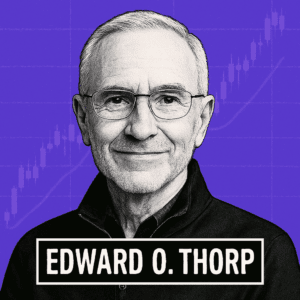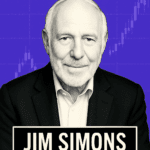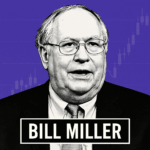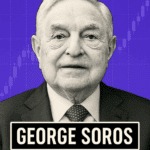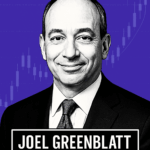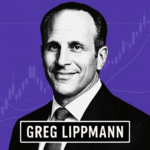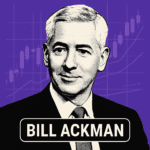Edward O. Thorp, often referred to as the “First Quant,” revolutionized both gambling and financial markets by applying mathematical principles to gain statistical advantages. Best known for developing card counting in blackjack and pioneering quantitative investing techniques, Thorp’s application of probability theory and mathematical modeling transformed the way we understand risk, odds, and strategic decision-making in uncertain environments.
Early Life and Education (1932–1961)
August 14, 1932
Edward Oakley Thorp is born in Chicago, Illinois. His family later relocates to southern California, where young Ed displays an early aptitude for mathematics and science. His childhood curiosity about games of chance and probability will later shape his revolutionary approaches to both gambling and investing.
1950s
Thorp attends the University of California, Los Angeles (UCLA), earning a bachelor’s degree in physics. He continues his academic journey at UCLA, pursuing graduate studies in mathematics, drawn to the precision and certainty of mathematical reasoning.
1958
Thorp completes his Ph.D. in mathematics at UCLA with a dissertation titled “Compact Linear Operators in Normed Spaces.” This rigorous mathematical training provides the foundation for his later applications of probability theory to both gambling systems and financial markets.
Academic Career and Early Gambling Research (1959–1966)
1959-1961
Thorp serves as a Moore Instructor at the Massachusetts Institute of Technology (MIT). During this time, he becomes fascinated with the mathematics of gambling, particularly blackjack. Using early computers at MIT, Thorp devises and tests his revolutionary card counting system that gives players a statistical edge over the house.
1961
In collaboration with Claude Shannon (known as the “father of information theory”), Thorp develops one of the world’s first wearable computers. The size of a cigarette pack, this pioneering device is designed to predict outcomes in roulette by tracking the speed of the ball and wheel. Testing their invention in Las Vegas, Thorp and Shannon demonstrate that even roulette—traditionally considered immune to prediction—can be beaten with mathematical modeling and technology.
1961-1965
Thorp joins New Mexico State University as Assistant Professor of Mathematics. While teaching, he continues refining his blackjack strategies and conducts real-world tests in Nevada casinos. Despite casino countermeasures, his system proves mathematically sound and profitable.
1962
Thorp publishes “Beat the Dealer,” the first book to mathematically prove that the house advantage in blackjack can be overcome through card counting. The book becomes an immediate bestseller and revolutionizes casino gambling worldwide. Casinos respond by changing rules and adopting countermeasures, including multiple decks and more frequent shuffling, to combat Thorp’s strategies. Nevertheless, the book brings the concept of statistical advantage in gambling to mainstream awareness.
1965-1982
Thorp joins the University of California, Irvine (UCI) as Associate Professor, later becoming full Professor of Mathematics and Finance. At UCI, he begins applying his probabilistic thinking to financial markets, seeing similarities between gambling odds and market inefficiencies.
Transition to Financial Markets (1967–1974)
1967
Co-authoring with Sheen T. Kassouf, Thorp publishes “Beat the Market,” which introduces mathematical strategies for warrant and option trading. The book presents the first systematic approach to options valuation, preceding the famous Black-Scholes model. Thorp develops a formula for warrant pricing that effectively anticipates many elements of modern options theory, demonstrating that derivatives markets can be exploited through mathematical analysis. This work pioneers quantitative finance and establishes Thorp as the first “quant” on Wall Street.
Late 1960s
Beginning with modest investments, Thorp applies his mathematical models to warrant trading, achieving consistently high returns. He develops convertible arbitrage strategies and other hedged approaches that generate profits while minimizing market risk. During this period, Thorp meets Warren Buffett at a bridge game in 1968, sparking a long-term mutual respect despite their different investment approaches.
Early 1970s
Thorp continues refining his financial models, developing early versions of what would later be called statistical arbitrage. His background in probability theory allows him to identify and exploit pricing inefficiencies across different securities. He begins managing money for a small group of investors, demonstrating that his mathematical approach can consistently outperform traditional investment methods.
Princeton/Newport Partners and Hedge Fund Success (1974-1988)
1974
Thorp co-founds Princeton/Newport Partners (PNP), one of the first quantitative hedge funds. The fund employs mathematical and statistical methods to identify market inefficiencies and construct hedged positions. PNP focuses on convertible securities arbitrage, warrant hedging, and other market-neutral strategies that generate profits regardless of overall market direction.
1974-1988
Under Thorp’s mathematical guidance, Princeton/Newport Partners achieves remarkable consistency, earning about 20% annualized returns after fees for nearly 20 years without a single losing quarter. This performance dramatically outpaces market averages while maintaining significantly lower risk. PNP’s success during this period demonstrates the viability of quantitative investment strategies at scale. The fund proves particularly resilient during market downturns, gaining 6.5% in 1973 and 9% in 1974 even as the broader market (S&P 500) plunged 15% and 27% respectively.
October 1987
During the “Black Monday” market crash, Thorp’s probabilistic approach shines. While markets collapse by over 20%, Thorp identifies a significant arbitrage opportunity: S&P futures trading approximately 15% below the equivalent basket of stocks. Implementing a carefully balanced long-futures, short-stocks strategy, PNP extracts a profit of approximately $1 million in a matter of days while other investors panic. This episode exemplifies Thorp’s ability to maintain rational decision-making during market extremes.
1988-1989
Princeton/Newport Partners becomes tangentially entangled in a broader investigation into Michael Milken’s junk bond operations. Although Thorp and his team are ultimately cleared of wrongdoing, the costly legal defense and disruption force the liquidation of PNP in 1989. Despite this abrupt end, the fund’s track record remains intact: 20 years of operation without a losing quarter, establishing Thorp’s place in investment history.
Later Career and Legacy (1990-Present)
1991
Applying his mathematical skepticism, Thorp analyzes Bernie Madoff’s investment operation and identifies statistical impossibilities in the reported trading volumes and returns. He concludes Madoff is likely running a Ponzi scheme—almost two decades before Madoff’s $50 billion fraud is publicly exposed in 2008. Thorp warns associates to avoid Madoff’s fund, showcasing his data-driven approach to detecting market anomalies.
1994-2002
Thorp establishes Ridgeline Partners, a statistical arbitrage fund focusing on short-term price discrepancies in equities. The fund continues Thorp’s pattern of steady returns until 2002, when he closes it due to diminishing returns from increasingly efficient markets. Throughout this period, Thorp maintains his investment philosophy: identifying mathematical edges, careful position sizing, and rigorous risk management.
2008-2009
During the global financial crisis, Thorp identifies another opportunistic arbitrage in Special Purpose Acquisition Companies (SPACs). These entities, trading at deep discounts to their net asset value despite holding only cash in trust accounts, represent nearly risk-free opportunities. By purchasing SPACs at 90 cents on the dollar and later redeeming them at full value plus interest, Thorp secures 10-12% annualized returns on essentially Treasury-backed assets during a period of market panic.
2017
Thorp publishes his memoir, “A Man for All Markets,” detailing his journey from academic mathematician to blackjack revolutionary to quantitative finance pioneer. The book shares insights into his mathematical approach to both gambling and investing, emphasizing the parallels between games of chance and financial markets. It also reveals personal anecdotes, including his early meetings with Warren Buffett and his analysis of Bernie Madoff’s fraud.
2020s
Now in his 90s, Thorp continues to manage his personal investments using quantitative principles while serving as an elder statesman of quantitative finance. His legacy lives on through the widespread adoption of his ideas: card counting remains the foundation of advantage blackjack play, while his financial innovations—statistical arbitrage, quantitative hedging, and mathematical market analysis—have become standard tools in modern investment management.
Think and Trade Like Edward Thorp: Key Principles
1. Chance and Choice: Playing Your Cards Wisely
“In the abstract, life is a mixture of chance and choice. Chance can be thought of as the cards you are dealt in life. Choice is how you play them.” – Edward O. Thorp
Thorp emphasizes the balance between external factors (chance) and personal decision-making (choice). Success comes not from controlling random outcomes, but from making optimal decisions within the constraints of probability. In markets, this means accepting that price movements contain random elements while systematically exploiting the non-random components through mathematical analysis.
2. Optimal Position Sizing: The Kelly Criterion
“The lesson of leverage is this: Assume that the worst imaginable outcome will occur and ask whether you can tolerate it. If the answer is no, then reduce your borrowing.” – Edward O. Thorp
Thorp was a pioneer in applying the Kelly criterion to both gambling and investing—a mathematical formula that determines the optimal bet size based on your edge and the probability of success. This principle prevents overbetting and ensures long-term capital growth even in volatile markets. Thorp observed that most financial blowups (like LTCM) resulted from excessive leverage relative to actual edge.
3. Evidence-Based Decision Making
“I also learned the value of withholding judgment until I could make a decision based on evidence.” – Edward O. Thorp
Thorp’s approach requires rigorous testing before risking capital. In blackjack, he ran thousands of simulations to validate his counting system; in investing, he tested strategies extensively with historical data before implementation. This discipline of requiring statistical evidence before acting contrasts with emotional or narrative-driven investment approaches.
4. Skepticism Toward Momentum
“Lesson: Do not assume that what investors call momentum, a long streak of either rising or falling prices, will continue unless you can make a sound case that it will.” – Edward O. Thorp
Thorp cautions against following market trends without underlying justification. During the late 1990s dot-com bubble, he notably avoided speculative tech stocks, demonstrating skepticism toward momentum-driven rallies unsupported by fundamentals. This rational detachment from market narratives protected him from significant losses when the bubble burst.
5. Market Inefficiencies: Finding Your Edge
“There are inefficiencies in the market, but they’re not easy to demonstrate, and I think that needs to be done before one shifts money in that direction.” – Edward O. Thorp
Thorp’s entire career demonstrates that markets contain exploitable inefficiencies—but they must be rigorously proven, not merely assumed. His pioneering work on warrant pricing showed mathematical approaches could identify mispriced securities that traditional analysis missed. This principle reminds investors to focus only on areas where they can demonstrate a genuine statistical advantage.
6. Information Advantage: The Food Chain
“Be aware that information flows down a ‘food chain,’ with those who get it first ‘eating’ and those who get it late being eaten.” – Edward O. Thorp
Thorp emphasizes that information advantages are crucial—whether in knowing the count of cards remaining in a blackjack deck or understanding market pricing anomalies before others. His success came partly from identifying mispriced securities before the broader market recognized the opportunity. This principle highlights the importance of either having better information than others or developing superior analytical frameworks for processing public information.
7. Emotional Discipline and Comfort Levels
“This plan, of betting only at a level at which I was emotionally comfortable and not advancing until I was ready, enabled me to play my system with a calm and disciplined accuracy.” – Edward O. Thorp
Thorp stresses emotional management as essential to successful trading. By sizing positions within psychological comfort zones, traders can maintain rational decision-making during market volatility. This principle explains why Thorp never experienced the emotional panic or forced liquidation that undermines many investors during downturns.
8. Games of Imperfect Information
“Bridge players know that bridge is what mathematicians call a game of imperfect information… The stock market also is a game of imperfect information and even resembles bridge.” – Edward O. Thorp
Thorp views markets as games of incomplete information where probabilistic thinking yields advantages. Like a skilled bridge player making inferences from partial information, a quantitative investor can gain edge by analyzing patterns and correlations hidden from casual observers. This principle underlies Thorp’s statistical arbitrage strategies that extract value from subtle market relationships.
9. Rational Detachment from Purchase Price
“What I had done was focus on a price that was of unique significance to me – my purchase price.” – Edward O. Thorp
Thorp learned to avoid anchoring bias—the tendency to fixate on the price at which you acquired an asset. After losing money on his first stock investment (Electric Autolite) by waiting years to get back to breakeven, Thorp adopted a purely forward-looking approach. Each day, he evaluates positions based on their current expected value, not their historical entry point.
10. Avoiding Market Manias and Frauds
“Hoaxes, frauds, manias, and other large-scale financial irrationalities have been with us from the beginnings of the markets.” – Edward O. Thorp
Thorp’s skeptical, data-driven approach helps identify both bubbles and frauds. His early detection of Bernie Madoff’s Ponzi scheme demonstrated how rigorous mathematical analysis can expose impossible claims. This principle reminds investors to maintain skepticism, especially when faced with claims of extraordinary returns without extraordinary risk.
How Thorp Compares to Other Investing Legends
- Thorp vs. Buffett: While Warren Buffett focuses on business fundamentals and long-term value, Thorp concentrates on mathematical pricing inefficiencies and hedged positions. Buffett conducts deep fundamental analysis to estimate intrinsic value, then buys at a discount; Thorp identifies statistical mispricings and constructs hedged bets to capitalize on convergence. Despite different methods, both emphasize risk management—Buffett through margin of safety in business value, Thorp through careful position sizing and hedging. Interestingly, Thorp became a significant Berkshire Hathaway investor, effectively outsourcing the value investing portion of his portfolio to Buffett.
- Thorp vs. Simons: Jim Simons of Renaissance Technologies built upon Thorp’s quantitative foundation, taking it to unprecedented scale and complexity. Both left academia (mathematics) to apply scientific methods to markets, but Simons developed more sophisticated algorithms and employed larger teams of PhDs. Thorp focused on identifiable structural arbitrages; Simons expanded into subtle statistical patterns across vast datasets. Simons acknowledged Thorp as “the godfather of quants,” highlighting his pioneering influence on modern quantitative finance.
- Thorp vs. Graham: Benjamin Graham, the father of value investing, and Thorp both sought market inefficiencies but through different lenses. Graham hunted undervalued stocks using fundamental analysis, waiting patiently for market recognition; Thorp sought pricing anomalies in derivatives and other instruments, typically with shorter holding periods and defined catalysts. Both emphasized risk minimization—Graham through “margin of safety” in purchase price, Thorp through mathematical hedging and position sizing. Essentially, Graham exploited psychological mistakes about business valuation, while Thorp exploited analytical mistakes in complex security pricing.
Final Thoughts: Mathematical Precision & Rational Decision-Making
To think and trade like Edward Thorp, investors must embrace:
- Probabilistic thinking over deterministic prediction
- Mathematical edge identification over gut feeling
- Optimal position sizing using the Kelly criterion
- Hedging against unnecessary risks while exploiting known edges
- Evidence-based decision making with thorough testing
- Emotional discipline during market extremes
Edward Thorp’s career proves that a scientific approach to markets—combining probability theory, statistical analysis, and disciplined risk management—can generate superior returns with reduced volatility. His methods demonstrate that by treating investing as a mathematical process rather than an emotional one, rational investors can achieve consistent success in seemingly unpredictable environments.
Think probabilistically, bet optimally, and let the principles of Edward O. Thorp guide your investment approach toward more rational and profitable outcomes.
